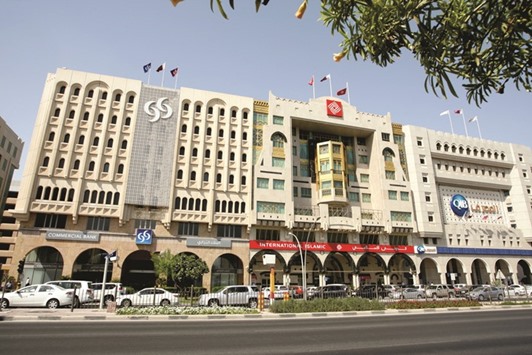Qatar’s banking sector witnessed a buoyant uptrend in credit off-take at the end of second quarter (Q2) of this year, helped by increasing financing needs of public and private sectors, according to Kamco Research.
Total credit facilities continued the uptrend and stood at “a record high” level at the end of Q2, 2016, with an increase of 1.4% quarter-on-quarter to reach QR784bn as on June 30, 2016, Kamco said in a report.
The public sector credit expanded 2.8% quarter-on-quarter and that of the private sector by 1.9%, it said.
Finding that within the private sector, large sectors utilising credit – real estate and consumption – recorded mixed trends; the report said. Realty credit fell 1.5% quarter-on-quarter in Q2, 2016, but grew 25.9% year-on-year; while credit towards consumption was up 0.1% on a quarterly basis; but fell marginally by 0.2% year-on-year.
Of the total credit extended by the country’s banking sector during Q2, 2016, public sector had cornered about 34% or QR263bn, followed by real estate 16% (QR125bn), consumption 15% (QR114bn), overseas loans 11% (QR87bn), services 10% (QR75bn), others 8% (QR60bn) and general trade 8% (QR59bn).
The report also found that Qatar’s broad money supply (M2) declined 2.5% quarter-on-quarter to QR493bn at the end of June 2016, after receding by 2.9% in the previous quarter of this year.
“The drop in M2 is mainly attributed to the decrease in demand deposits and time savings deposits, which went down by QR7.7bn and QR5.4bn respectively on a quarterly basis in Q2, 2016,” it said.
Qatar’s housing and related utilities prices remained stable over the period, along with communication, recreation and education; whereas clothing became expensive by 2% against the previous quarter.
Average inflation in Qatar is expected to be 2.4% this year compared to 1.68% in 2015, 3.32% in 2014, 3.1% in 2013, 1.9% in 2012, 1.9% in 2011 and -2.4% in 2010, according to the report.
Qatar’s first quarter gross domestic product (GDP) fell 9% quarter-on-quarter as hydrocarbons related sectors witnessed a 24% plunge during the same period. On a yearly basis, the country’s GDP shrank 14.5% with oil and gas related sectors plunging 41% over the same period.
The non-oil sector, however, grew 0.1% 4.5% year-on-year; even as it fell 1% on a quarterly basis as the private sector growth was 0.1% year-on-year and declined by 2% on a quarterly basis. Non-oil government sector GDP expanded 2% quarter-on-quarter in the first quarter of 2016, Kamco said.
Qatar’s share in the Gulf Cooperation Council’s GDP is expected to be 12.4% in 2016 compared to 13.1% in 2015, 12.7% in 2014, 12.5% in 2013, 12.1% in 2012, 11.8% in 2011 and 11% in 2010.
The Gulf country’s real GDP growth is expected to be 3.4% in 2016 against 3.27% in 2015, 3.98% in 2014, 4.58% in 2013, 4.88% in 2012, 13.38% in 2011 and 19.59% in 2010.

Total credit facilities continued the uptrend and stood at u201ca record highu201d level at the end of Q2, 2016, with an increase of 1.4% quarter-on-quarter to reach QR784bn as on June 30, 2016, Kamco said. PICTURE: Nasar TK
